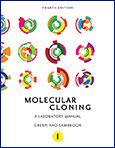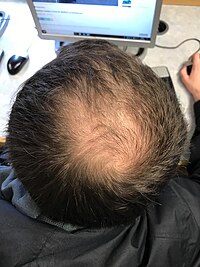
Big on Change, Small on Innovation: Evolutionary Consequences of RNA Sequence Duplication
Sign Up to like & getrecommendations! Published in 2019 at "Journal of Molecular Evolution"
DOI: 10.1007/s00239-019-09906-3
Abstract: The potential for biopolymers to evolve new structures has important consequences for their ability to optimize function and our attempts to reconstruct their evolutionary histories. Prior work with in vitro systems suggests that structural remodeling… read more here.
Keywords: evolution; rna sequence; duplication; sequence duplication ... See more keywords

Effect of RNA sequence context and stereochemistry on G-quadruplex-RHAU53 interaction.
Sign Up to like & getrecommendations! Published in 2020 at "Biochemical and biophysical research communications"
DOI: 10.1016/j.bbrc.2020.09.045
Abstract: RNA G-quadruplex (rG4) structure and its association with rG4-binding proteins/peptides are important for its function. However, there is very limited study that investigates what factors are involved in rG4 that drive the rG4-protein/peptide interaction. Here… read more here.
Keywords: rg4; rna sequence; rhau53; effect rna ... See more keywords

iRNAD: a computational tool for identifying D modification sites in RNA sequence
Sign Up to like & getrecommendations! Published in 2019 at "Bioinformatics"
DOI: 10.1093/bioinformatics/btz358
Abstract: MOTIVATION Dihydrouridine (D) is a common RNA posttranscriptional modification found in eukaryotes, bacteria and a few archaea. The modification can promote the conformational flexibility of individual nucleotide bases. And its levels are increased in cancerous… read more here.
Keywords: modification sites; rna sequence; identifying modification; sites rna ... See more keywords

RNA sequence and structure control assembly and function of RNA condensates.
Sign Up to like & getrecommendations! Published in 2021 at "RNA"
DOI: 10.1261/rna.078875.121
Abstract: Intracellular condensates formed through liquid-liquid phase separation (LLPS) primarily contain proteins and RNA. Recent evidence points to major contributions of RNA self-assembly in the formation of intracellular condensates. As the majority of previous studies on… read more here.
Keywords: rna sequence; rna; formation; structure ... See more keywords

Combined analyses of RNA-sequence and Hi-C along with GWAS loci—A novel approach to dissect keloid disorder genetic mechanism
Sign Up to like & getrecommendations! Published in 2022 at "PLoS Genetics"
DOI: 10.1371/journal.pgen.1010168
Abstract: Keloid disorder is a tumour-like disease with invasive growth and a high recurrence rate. Genetic contribution is well expected due to the presence of autosomal dominant inheritance and various genetic mutations in keloid lesions. However,… read more here.
Keywords: keloid disorder; dissect keloid; rna sequence; loci ... See more keywords